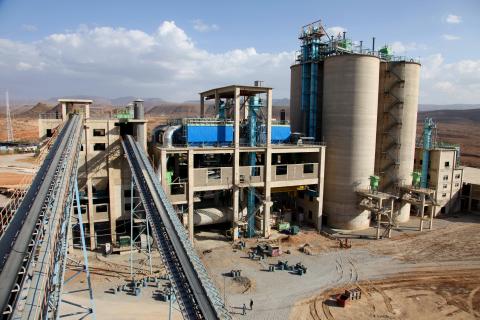Why Have Governments Subsidized Fossil Fuels for Decades?
Why Have Governments Subsidized Fossil Fuels for Decades?

Even after decades of efforts to combat global warming, fossil fuels still provide over 80% of the world’s energy. You might assume this makes fossil fuel production highly profitable, but that isn’t always the case. The easiest-to-reach oil reserves have already been tapped, and many countries want to secure their domestic energy supplies. Additionally, energy price fluctuations and the rise of renewable energy sources like solar and wind have made it more challenging for fossil fuel companies to remain profitable, especially in sectors like coal.
This is where fossil fuel subsidies come into play. For example, in the 2023-24 fiscal year alone, Australia provided A$14.5 billion in subsidies to major fossil fuel producers and consumers.
So, why do some of the largest companies in the world receive these subsidies? Let’s explore the reasons.
Private Companies, Public Money
Globally, private companies are the main players in fossil fuel production, although some countries rich in fossil resources have state-owned enterprises, such as Saudi Arabia’s Aramco and Russia’s Rosneft.
Governments provide subsidies to fossil fuel companies for several reasons. Historically, wealthy nations have needed vast amounts of fossil fuels for manufacturing, transportation, and power generation. Although many countries have fossil fuel resources within their borders, only a few are entirely self-sufficient. This dynamic has allowed fossil fuel-rich nations, like Saudi Arabia, to become incredibly wealthy.
To bolster energy security and encourage local production, many governments use subsidies to incentivize the search for new sources of coal, gas, and oil. These financial aids can be crucial for making fossil fuel companies competitive on a global scale. For instance, Canada has invested billions in subsidies to support its oil sands and fracking projects.
In the United States, subsidies played a key role in the fracking boom. New methods of extracting natural gas and oil, supported by substantial tax incentives, transformed the US from a major importer of oil and gas to a net exporter by 2019.
The rationale is clear: achieving energy independence is a powerful motivator for countries like the US.
However, once subsidies are established, they are difficult to remove. In Indonesia, generous fuel subsidies account for 2% of the country’s GDP. Attempts by the government to reduce these subsidies have led to public unrest and riots.
There’s another reason subsidies persist: fossil fuels continue to play a vital role in driving economic growth in many countries. Supporting them has long been viewed as a means to maintain economic stability.
Globally, fossil fuel subsidies are estimated to total an astonishing $10.5 trillion annually. This figure has risen sharply in recent years, particularly after Russia’s invasion of Ukraine. As European countries sought to reduce their reliance on Russian gas, energy prices surged worldwide. In response, some governments introduced new subsidies to support businesses and consumers.
This staggering total includes two types of subsidies: explicit (direct financial support) and implicit (indirect support, such as infrastructure development to facilitate fossil fuel transport).
Explicit Subsidies
Explicit fossil fuel subsidies involve direct financial incentives from governments to fossil fuel producers and consumers. These can take various forms, including tax breaks, direct payments, grants, and price controls, all aimed at lowering the costs associated with fossil fuel production and consumption.
In Australia, explicit subsidies include fuel tax credits and tax reductions for exploration. Fossil fuel companies can receive subsidies to offset losses incurred during the time it takes to discover and begin extracting new resources.
In the US, oil and gas companies benefit from the oil depletion allowance, which lets them deduct a percentage of their gross income from oil and gas sales as an expense. They can also claim tax deductions for intangible drilling costs, such as labor and materials needed to find new oil and gas sources.
China also uses direct subsidies, reduced land-use fees, and preferential loans to support coal production and consumption. The government also provides direct payments to consumers to encourage fossil fuel use.
Implicit Subsidies
Implicit subsidies, often considered “hidden” or “indirect,” don’t involve direct financial transfers to fossil fuel producers. Instead, they reflect the broader societal and environmental costs associated with fossil fuel use, such as climate change, public health damage, and other negative impacts. Fossil fuel companies often do not pay for the pollution their products cause, effectively granting them an indirect subsidy.
Implicit subsidies also include government investments in infrastructure, like transport networks, pipelines, oil refineries, and port facilities, which enhance fossil fuel production and distribution. An example is the Middle Arm development in Darwin, funded by both the federal and territorial governments.
Why Are These Subsidies Still in Place?
As the global community confronts an escalating climate crisis, fossil fuel subsidies are under increased scrutiny. However, politically, removing subsidies is challenging once they are in place. This is why many governments have started to shift focus, providing subsidies and tax incentives to green energy initiatives instead. Examples include the US’s substantial $500 billion Inflation Reduction Act, the European Union’s Green Deal, and China’s extensive support for green technologies like electric vehicles and solar panels.
The goal of these initiatives is to make renewable energy and electrified transportation more affordable and competitive, much like fossil fuel subsidies did for oil, gas, and coal.
Article source: https://theconversation.com/for-decades-governments-have-subsidised-fossil-fuels-but-why-213467
Photo attribution: Gavin Houtheusen/Department for International Development, Factory of National Cement Share Company, CC BY 3.0

Το comment on the article or to read all articles, please sign in or sign up